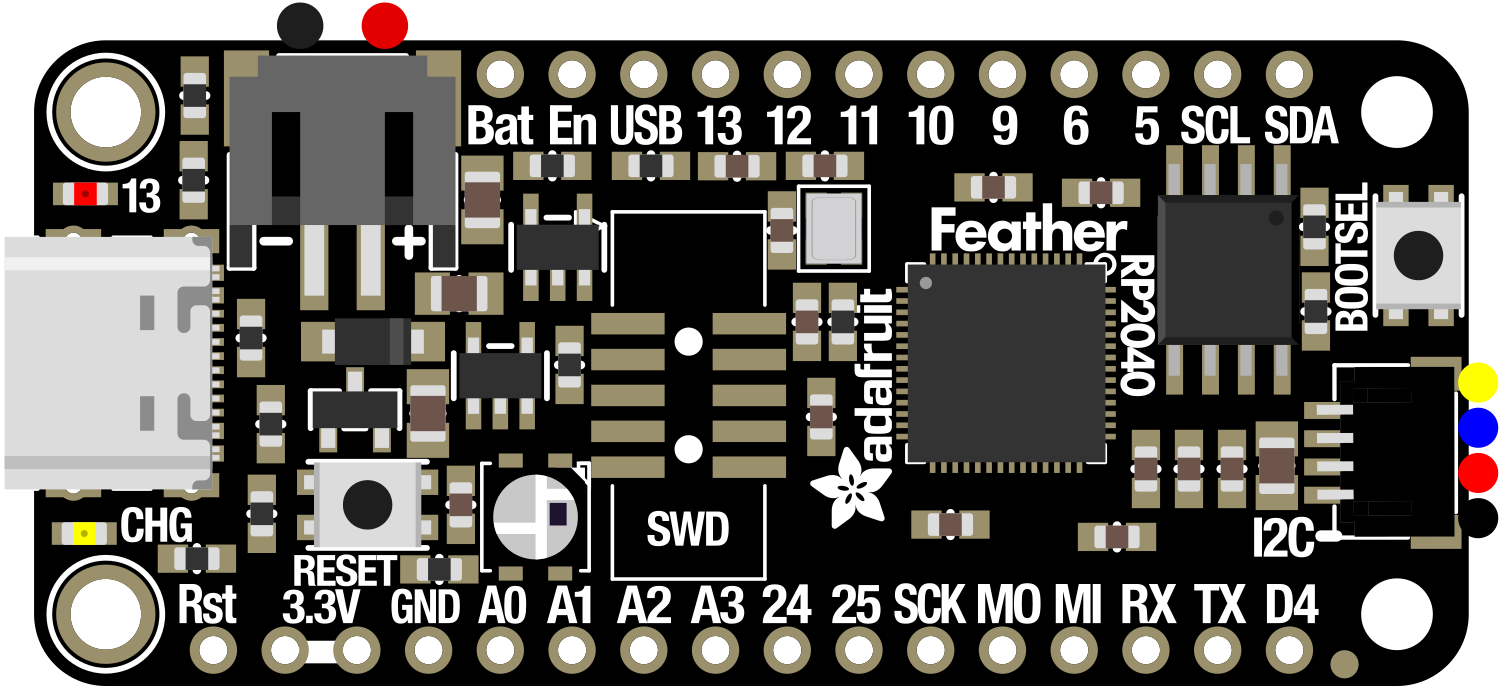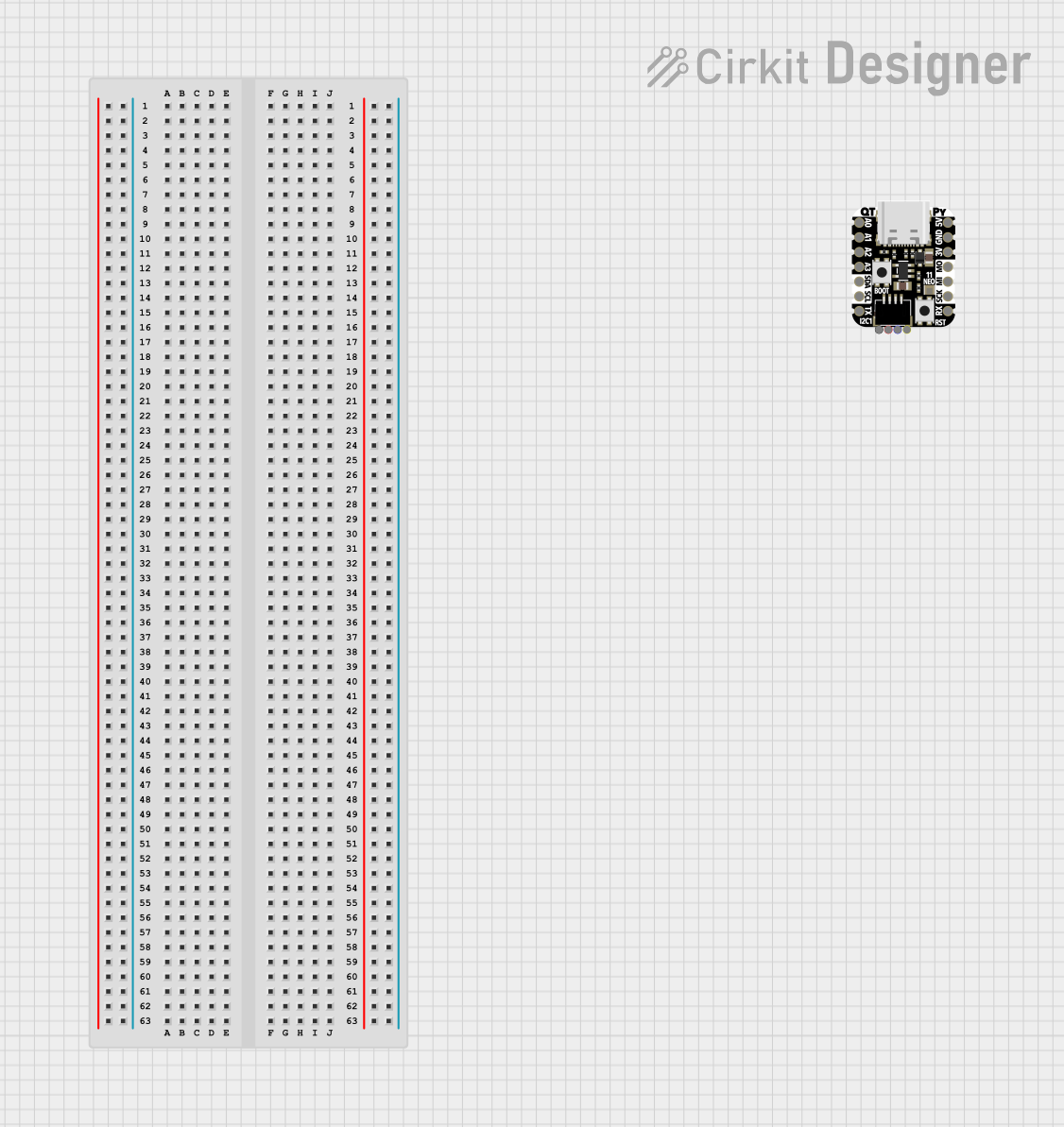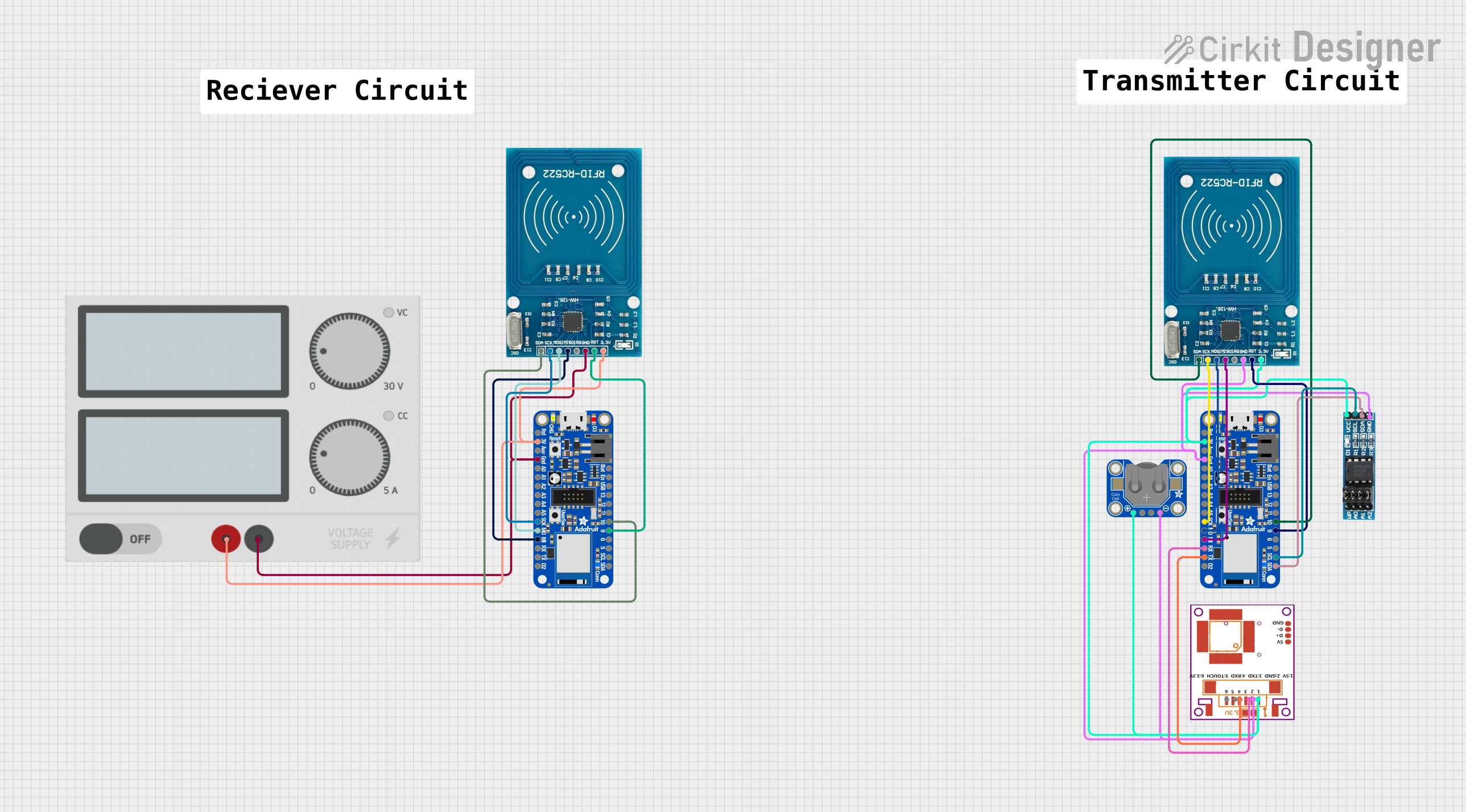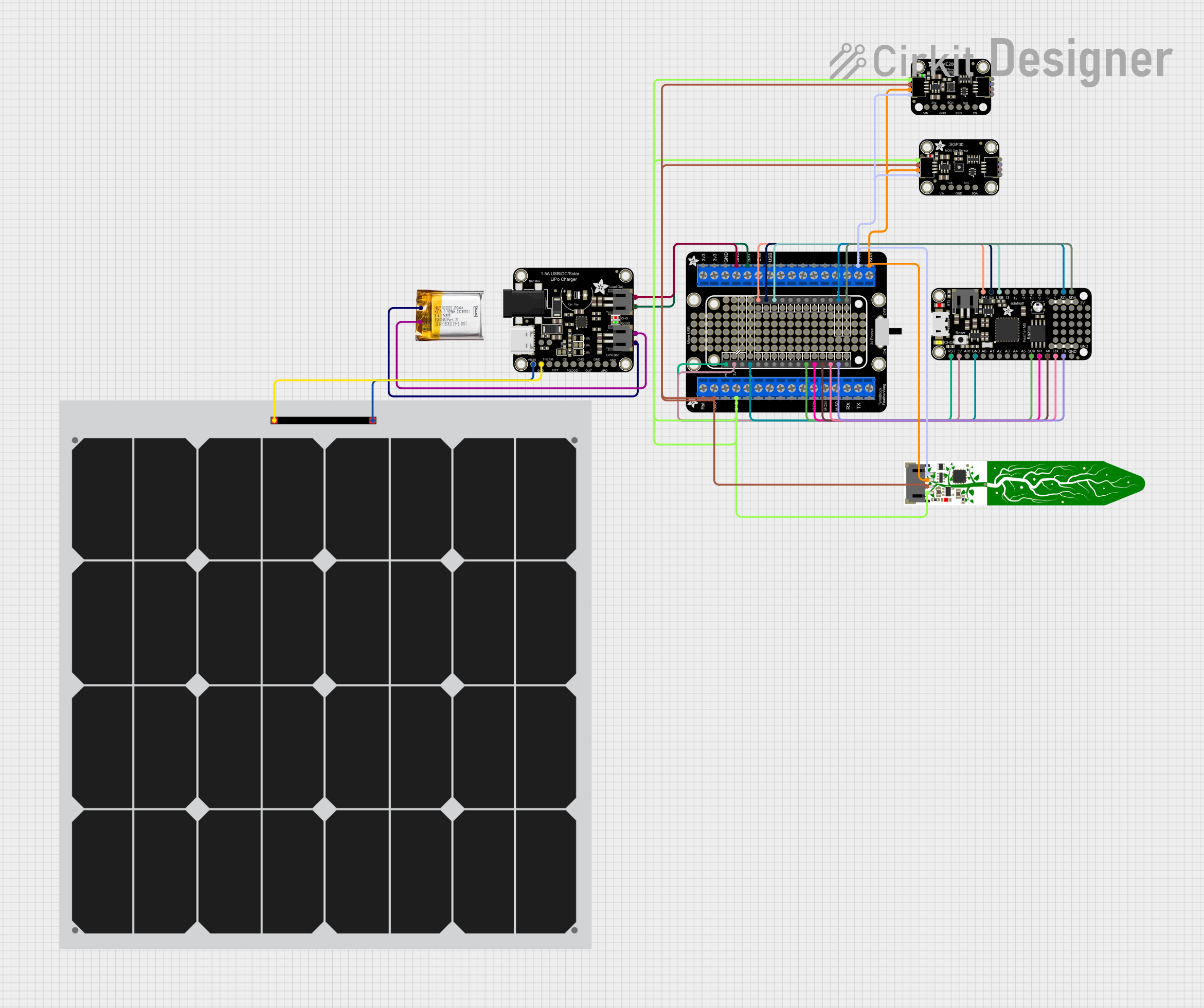
How to Use Adafruit Feather RP2040: Examples, Pinouts, and Specs

 Design with Adafruit Feather RP2040 in Cirkit Designer
Design with Adafruit Feather RP2040 in Cirkit DesignerIntroduction
The Adafruit Feather RP2040 is a versatile and powerful development board that harnesses the capabilities of the Raspberry Pi RP2040 microcontroller. Designed with portability and affordability in mind, this board is part of the Feather ecosystem, known for its compact size and extensive I/O options. The RP2040 chip features a dual-core ARM Cortex-M0+ processor, providing ample computational power for a wide array of embedded projects, from DIY electronics to professional prototyping. Common applications include wearable devices, IoT applications, custom keyboards, and educational tools.
Explore Projects Built with Adafruit Feather RP2040

 Open Project in Cirkit Designer
Open Project in Cirkit Designer
 Open Project in Cirkit Designer
Open Project in Cirkit Designer
 Open Project in Cirkit Designer
Open Project in Cirkit Designer
 Open Project in Cirkit Designer
Open Project in Cirkit DesignerExplore Projects Built with Adafruit Feather RP2040

 Open Project in Cirkit Designer
Open Project in Cirkit Designer
 Open Project in Cirkit Designer
Open Project in Cirkit Designer
 Open Project in Cirkit Designer
Open Project in Cirkit Designer
 Open Project in Cirkit Designer
Open Project in Cirkit DesignerTechnical Specifications
Key Features
- Microcontroller: Raspberry Pi RP2040
- Processor: Dual-core ARM Cortex-M0+ @ 133MHz
- Memory: 264KB of SRAM, and 2MB of onboard Flash memory
- USB: Native USB support
- GPIO: 21x GPIO pins
- Analog Inputs: 4x 12-bit ADC channels
- UART, I2C, SPI: Available
- PWM Outputs: Available on all GPIO pins
- Power Supply: USB-C or LiPo battery (with built-in charging circuit)
- Dimensions: 51mm x 23mm x 8mm (without headers)
Pin Configuration
| Pin Number | Function | Description |
|---|---|---|
| 1 | 3V3 | 3.3V power supply output |
| 2-13 | GPIO 0-11 | General-purpose I/O pins |
| 14 | EN | Enable pin for the 3.3V regulator |
| 15 | VBAT | Battery voltage input for LiPo batteries |
| 16 | USB | USB power input/output |
| 17-20 | SCK, MO, MI, CS | SPI default pins |
| 21-22 | SDA, SCL | I2C default pins |
| 23-24 | TX, RX | UART default pins |
| 25 | A0 | Analog input channel 0 |
| 26-28 | A1-A3 | Additional analog input channels |
| 29 | BUSY | Flash memory busy status |
| 30 | GND | Ground |
Usage Instructions
Setting Up the Adafruit Feather RP2040
- Connect the board to your computer using a USB-C cable.
- Install the necessary drivers and board support package for the RP2040 in your preferred development environment, such as the Arduino IDE or Thonny Python IDE.
- Select the Adafruit Feather RP2040 from the list of available boards.
Circuit Integration
- Ensure that the power supply does not exceed the recommended voltage levels.
- Connect peripherals to the GPIO pins, taking note of the pin functions and current limitations.
- Use the onboard ADC channels for analog sensors, and configure the SPI, I2C, or UART pins for communication with other devices.
Best Practices
- Always disconnect the board from power sources before making or altering connections.
- Use a current limiting resistor with LEDs to prevent damage.
- Avoid drawing more than 50mA from any GPIO pin.
- Utilize the built-in LED on pin 13 for debugging purposes.
Example Code for Arduino UNO
Here is a simple example of blinking an LED connected to pin 13 of the Adafruit Feather RP2040 using Arduino code:
// Define the LED pin
const int ledPin = 13;
void setup() {
// Initialize the LED pin as an output
pinMode(ledPin, OUTPUT);
}
void loop() {
// Turn the LED on
digitalWrite(ledPin, HIGH);
// Wait for one second
delay(1000);
// Turn the LED off
digitalWrite(ledPin, LOW);
// Wait for one second
delay(1000);
}
Troubleshooting and FAQs
Common Issues
- Board not recognized: Ensure that the USB cable is properly connected and that the board is selected in your development environment.
- Failed to upload sketch: Check the USB cable and ensure that the correct board and port are selected. Also, verify that the bootloader is not corrupted.
- I/O pin not functioning: Confirm that the pin is not being used by another process and that it is configured correctly in your code.
FAQs
Q: Can I power the Adafruit Feather RP2040 with a battery? A: Yes, you can power it with a LiPo battery, and it includes a built-in charging circuit.
Q: What is the maximum voltage for the analog input pins? A: The maximum voltage for the analog pins is 3.3V.
Q: How do I reset the board? A: Briefly press the reset button on the board to reset it.
Q: Can I use CircuitPython with this board? A: Yes, the Adafruit Feather RP2040 supports CircuitPython.
For further assistance, consult the Adafruit Feather RP2040 forums and the extensive online resources available from Adafruit.